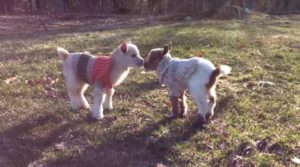
CC&Rs
Restrictive covenants are a “method of effectuating private residential development schemes.” Swenson Erickson, 2000 UT 16, ¶ 21, 998 P.2d 807.
Governed by the same rules of construction as those used to interpret contracts. Unambiguous restrictive covenants should be enforced as written. If CC&Rs are not ambiguous they are interpreted according to the plain language. Interpreted to give effect to the intention of the parties ascertained from the language used in the instrument, or the circumstances surrounding creation of the servitude, and to carry out the purpose for which it was created. Restrictive covenants are a “method of effectuating private residential development schemes.” Swenson Erickson, 2000 UT 16, ¶ 21, 998 P.2d 807.
See Ft. Pierce Indus. Park Phases II, III & IV Owners Assn. v. Shakespeare, 379 P.3d 1218, 1225 (Utah 2016)
Steiner v. Windrow Estates (Fred & Barney)
The following are excerpts from the Windrow Estates CC&Rs and interpretation of that language:
Par. 6: “No offensive or noxious activity shall be carried on upon any lot, nor shall anything be done thereon tending to cause embarrassment, discomfort, annoyance, or nuisance to the neighborhood. There shall not be maintained any plants or animals, or device or thing of any sort whose normal activity or existence is in any way noxious, unsightly, unpleasant or of a nature as may diminish or destroy the enjoyment of other property in the neighborhood by the owners thereof; except horses and stables may be maintained, but every effort must be made to reduce the stable odors.”
Par. 9: “No animals, livestock or poultry of any kind shall be raised, bred or kept on any lot except that horses, dogs, cats or other pets may be kept provided they are not kept, bred, or maintained for any commercial purposes, unless allowed by Windrow Estates Property Owners’ Association, and provided that such household pets do not attack horses or horsemen.”
Fred and Barney, two goats, lived with residents at Windrow Estates. The owners and the HOA could not come to agreement as to whether the goats could be classified as household pets. The HOA asserted Fred and Barney are not permitted to be kept on any Lot under the terms and conditions of the CC&Rs; the court entered judgment declaring that “goats” are livestock; the HOA was within its discretion in concluding that the maintaining of Fred and Barney on Plaintiffs’ property violates Paragraphs 6 and 9 of the CC&Rs (Steiner v. Windrow Estates, North Carolina, 2011).
Trial court was affirmed by the court of appeals: Fred and Barney are household pets; Fred and Barney are not livestock; owners are not in violation of Paragraph 9 by keeping Fred and Barney because they are household pets. Paragraph 6 (“Nuisance”) is void for vagueness.
Weldy v. Northbrook
Weldy v. Northbrook Condo (Conn. 2006) is another example of a court ruling based on language found in CC&Rs. In part, the CC&Rs state: “all dogs, cats or household pets shall be restrained by leash or other comparable means and shall be accompanied by an owner at all times.”
What is a “Leash”? Board adopted clarification stating that “leashes or comparable restraints for dogs, cats or household pets shall not exceed twenty feet in length”.
Facts: Owner allows 9 ½ year old black Labrador retriever to play ball and frisbee in the common area behind their Unit on a 75’ leash.
Holding: “A rule or regulation is a tool to implement or manage existing structural law, while an amendment presumptively changes existing structural law”. HOA’s clarification was not an amendment, rather it was a clarification where the definition of “leash” did not exist in CC&Rs.

